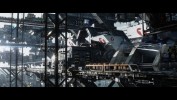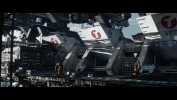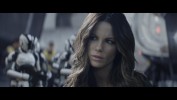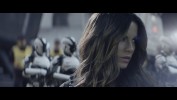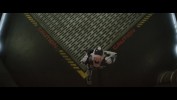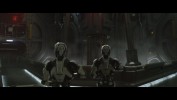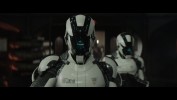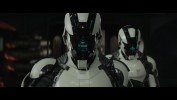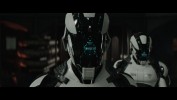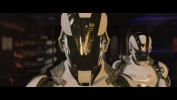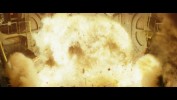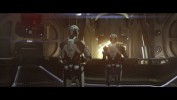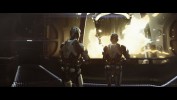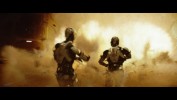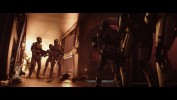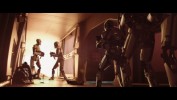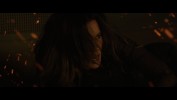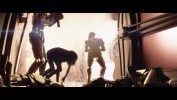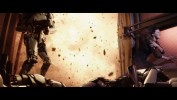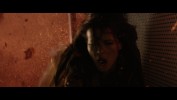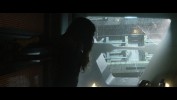Total Recall
DIRECTOR : Len Wiseman
PRODUCTION : Original Film
VFX SUPERVISOR : Olivier Cauwet
VFX PRODUCER : Fabrice Lett
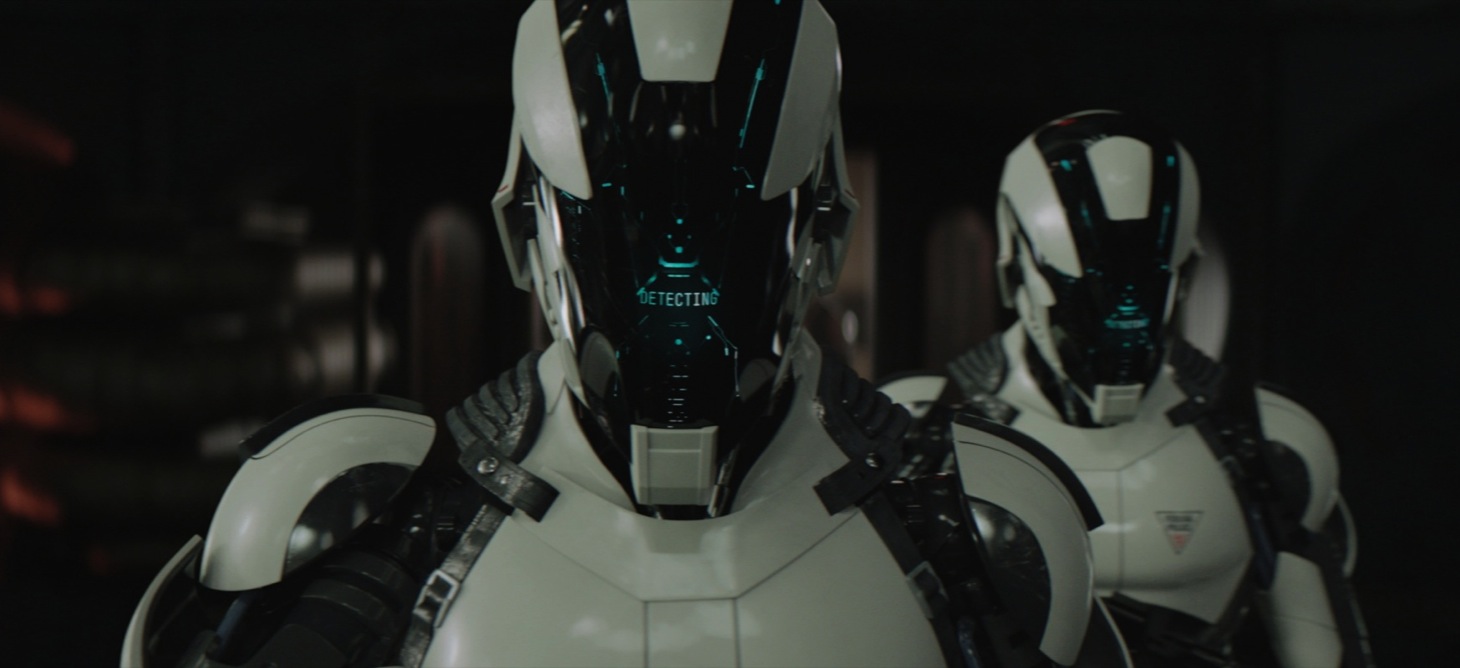
NUMBER OF SHOTS : 18
Production notes
Introduction
Mid-May 2012, with the release date of « Total Recall » approaching fast, the producers, who needed help to complete the film on time, contacted BUF Compagnie.
Initially, BUF was tasked with creating a full CG shot of the outside surroundings of the UFB Factory where Douglas Quaid, Colin Farrell's character, works.
At the time, we were extra6 weeks away from the official end of the film's post-production and BUF ended up working on a great variety of effects on 17 shots of the film.
BUF had the pleasure of collaborating with VFX Supervisor Angus Bickerton again, after recently working with him on Tim Burton's "Dark Shadows". He acted as the link between Len Wiseman - the director - and BUF.
Angus was based out of London, at the heart of the film's post-production. In the beginning, we talked to him once a day via video conference and Cinesync but due to the film's delay, we quickly moved to speaking twice a day: we wanted to exchange with Angus Bickerton as much as possible. Since BUF was involved quite late, if not to say towards the very end of the post, everything was already established: designs, atmospheres, etc. So BUF needed to quickly integrate into the pipeline and its work had to blend seemlessly into the work of the other VFX studios.
Despite the tight deadlines, BUF explored all the possibilities that the shots offered and made a lot of proposals; which is exactly what Angus Bickerton expected.
Summary
BUF created the full CG shot of the outside surroundings of the "UFB Factory", a 6 seconds establishing shot in which it designed the factory, added the city in the background, highways, cars, a cargo train and workers.
Fitting in with Dneg's work, BUF produced set extensions for the engine room - which Douglas Quaid subsequently bombs.
BUF worked on a sequence in which robot soldiers - aka the Synths - are blown to bits in a series of explosions. BUF had to stage the shot, animate it, extend the set of the engine room, add SFX and finally integrate the Synths and some filmed elements – including explosions and the actress Kate Beckinsale.
This sequence was composed of a series of elements: Synths close-ups, a wide shot with set extensions and walking Synths, shots where ten Synths are blown to pieces by explosions in the hallways, shots where a full CG background had to be incorporated behind the explosion of the engine room, and finally shots where BUF had to comp Kate Beckinsale into the middle of explosions and add SFX.
BUF was awarded a shot in the sequence of the China's Fall destruction. This shot was very complex with the integration, through a window, of a full CG exterior set crumbling in a CG thunderstorm. This meant paying particular attention to details such as lightnings, the rain, CG debris, sparks...
Shots with Synths to animate and integrate into the hallways, a dead synth on the ground, background flames enhancements and ember additions (right after the explosion) were also entrusted to BUF.
BUF extracted Kate Beckinsale from a shot and integrated her into a sequence where the shooting hadn't planed her to be in.
After a scenario adjustment at the editing stage, BUF also worked on two more shots Kate Beckinsale had to be added into. This involved work on the background and comp on Mrs. Beckinsale.
USB Factory
BUF was asked to make concept designs for the factory and given the short timeline, the team decided to start in 3D right away. Quickly, several proposals were made with simple templates and various proposals for the comp of the shot in different light settings.
In parallel, the BUF team was precisely modeling the elements Len Wiseman had already approved, including the road and rail structures, the stanchions (pillars supporting high buildings block), details like cables, fans, the pipe system and a lot of elements dispatched on buildings and CG structures.
Through discussions between Angus Bickerton and Pierre Buffin, the factory's design was quickly defined. We therefore modeled the structure in detail, and once was had a general approval for the design, comp and camera tracking, we started mapping the elements of the shot.
We separated the work on the background into two parts. For the the lower part of the city, we used pictures of New York, and for the upper part, we created apartment blocks with greenery and billboards in 3D. The models of the buildings Double Negative provided us with didn't have shaders or textures; we therefore had torearrange them in the background and then map them.
The city's atmosphere is peculiar: wet as if it had just rained, with cool colors of blue-gray dominance and high contrast, dense to the point where we can barely catch a sight of the sky, a rich structure of buildings with a suspended road network that runs through the heart of the city and elevator buses connecting the city's strata.
This is a wide shot, with structures so huge that it is difficult to get a sense of scale. Finding visual cues was one of BUF's major challenges: we put 3D workers next to cranes on gateways, and also containers on cargo trains. Was modeled a detailed foreground on which we incorporated extras shot on green screen. In the depth of each shot, we needed to find a visual cue that would give a sense of scale.
To add more detail to the shot, BUF animated CG characters, cars above and below the road networks, deploying cranes, running trains, elevator buses moving up and down and working factory workshops.
We used global illumation for the light, the sun and the atmosphere. We placed and animated a multitude of small lights in the factory and in all the activity areas to strengthen the light effects.
In order for the production to remain responsive on a shot that was becoming increasingly complex, we optimized the rendering. We decomposed the shot into several layers of depth, and each element was rendered during the night, which allowed us to show a new version with the latest comments incorporated each day. In the end, we presented Angus Bickerton with 34 versions of this shot.
Engine Room
For this sequence, the main research focused on the Synths' staging. We had to decide on the number of robots to have and their individual actions while telling a story and fitting in with an interposing shot from Dneg.
The first challenge was the animation: The Synths are robot-soldiers, they have a staunch walk, their shoulders don't sway, they do not protect themselves in explosions, etc. There always had to be details in the animation that reminded us that they are robots, not human beings wearing armor.
The second challenge was the integration of the Synths.
For the destruction shots in the hallway, we comped several explosion plates to make the sequence more violent. Once the background was done, we animated and integrated the CG Synths that would be destroyed in the explosions. The main concern in integrating such a shot is the lighting effect that changes from frame to frame because of the explosion. To solve this, we projected the scans of the explosion on the 3D model of the set. That way, we got a conherent perspective for the reflections and the lighting effects.
Finally, we comped in the greenscreen performance of Kate Beckinsale – and added CG debris, pieces torn from the Synths, CG embers and blast effects to improve the integration and make the shots look more dangerous.
For the explosion shots inside the "Engine Room", only ground and pyrotechnic effects were shot. The explosion had to be extracted from a set that required CG set extension work. It was easier to recreate the set than integrate all the pieces. So we lit the CG set and animated elements of pistons being blown away by the explosion. To help with the integration, we added a blast effect and some debris. We animated the lights to be synchro with the explosion and then frame by frame, we adjusted the colorimetry of high and low lights of the CG set. The explosion was shot under a low expositon to get all the details in the high lights. When it explodes, it flashes the film which strengthens the low lights.
To improve the integration between the explosion, the set and the Synths, we added sfx, a blast to make it visually more powerful, debris and animated the pistons to simulate the blast effect.



